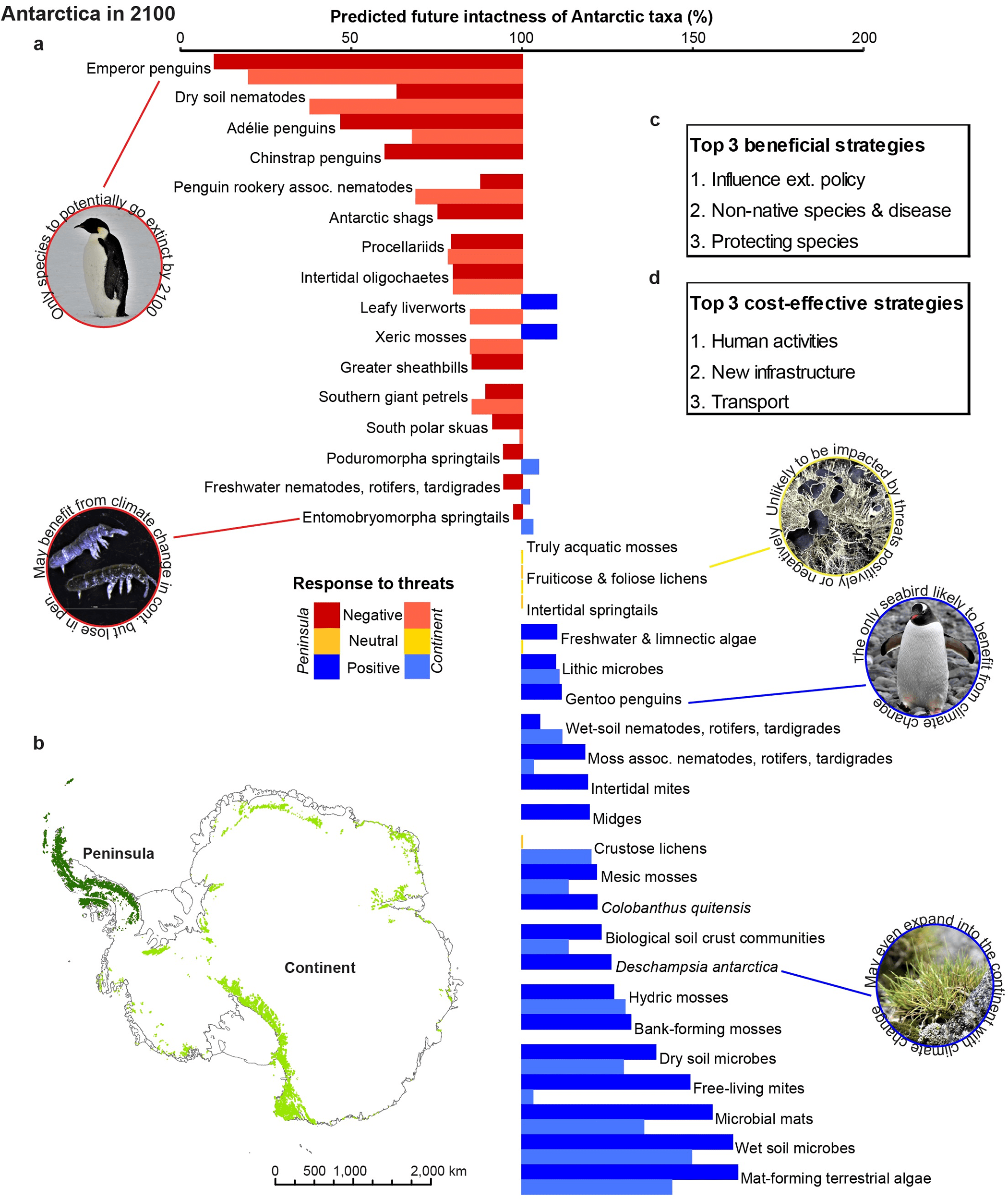
In this paper the authors assess how terrestrial Antarctic species will respond to current and future threats in order to identify priority conservation strategies. Lead author Jasmine Lee has provided a breakdown of the paper’s methods and key findings on Twitter.
Abstract
Antarctic terrestrial biodiversity faces multiple threats, from invasive species to climate change. Yet no large-scale assessments of threat management strategies exist. Applying a structured participatory approach, we demonstrate that existing conservation efforts are insufficient in a changing world, estimating that 65% (at best 37%, at worst 97%) of native terrestrial taxa and land-associated seabirds are likely to decline by 2100 under current trajectories. Emperor penguins are identified as the most vulnerable taxon, followed by other seabirds and dry soil nematodes. We find that implementing 10 key threat management strategies in parallel, at an estimated present-day equivalent annual cost of US$23 million, could benefit up to 84% of Antarctic taxa. Climate change is identified as the most pervasive threat to Antarctic biodiversity and influencing global policy to effectively limit climate change is the most beneficial conservation strategy. However, minimising impacts of human activities and improved planning and management of new infrastructure projects are cost-effective and will help to minimise regional threats. Simultaneous global and regional efforts are critical to secure Antarctic biodiversity for future generations.
Reference: Lee JR, Terauds A, Carwardine J, Shaw JD, Fuller RA, Possingham HP, et al. (2022) Threat management priorities for conserving Antarctic biodiversity. PLoS Biol 20(12): e3001921. https://doi.org/10.1371/journal.pbio.3001921
Image: Lee et al 2022. Fig 1. Vulnerability of terrestrial Antarctic biodiversity to all threats under climate forcing scenario RCP8.5 and the most beneficial and cost-effective conservation management strategies.
